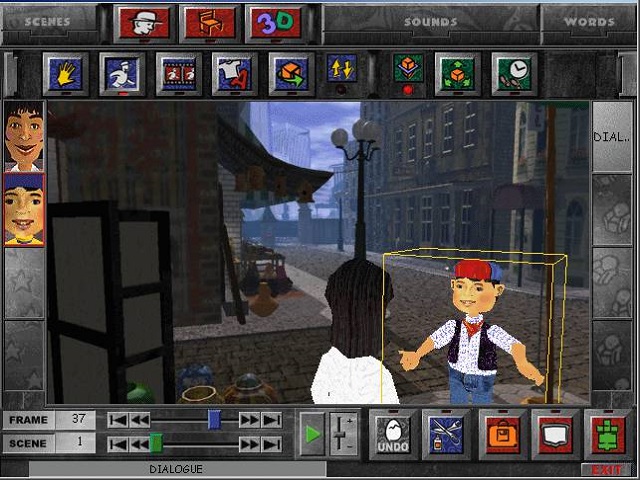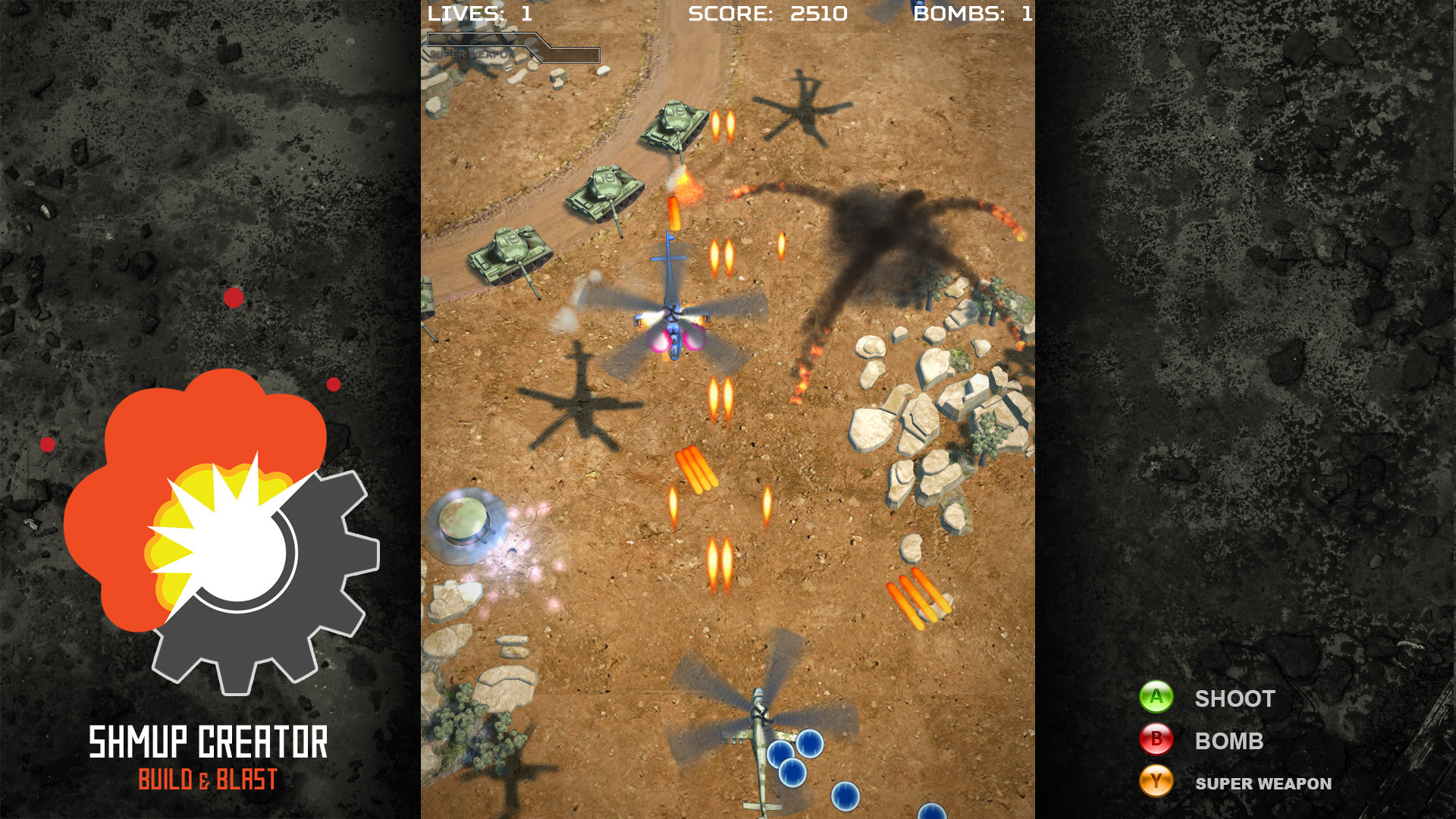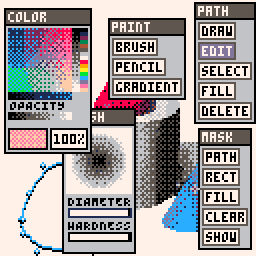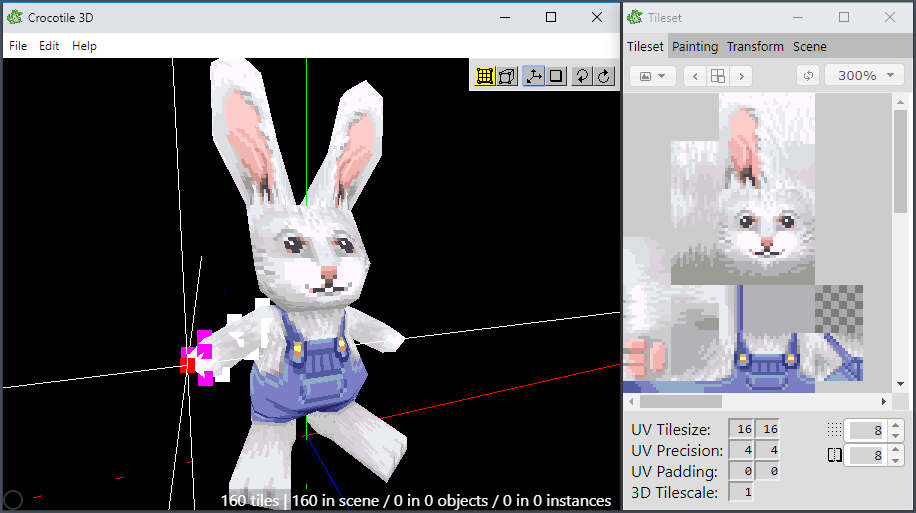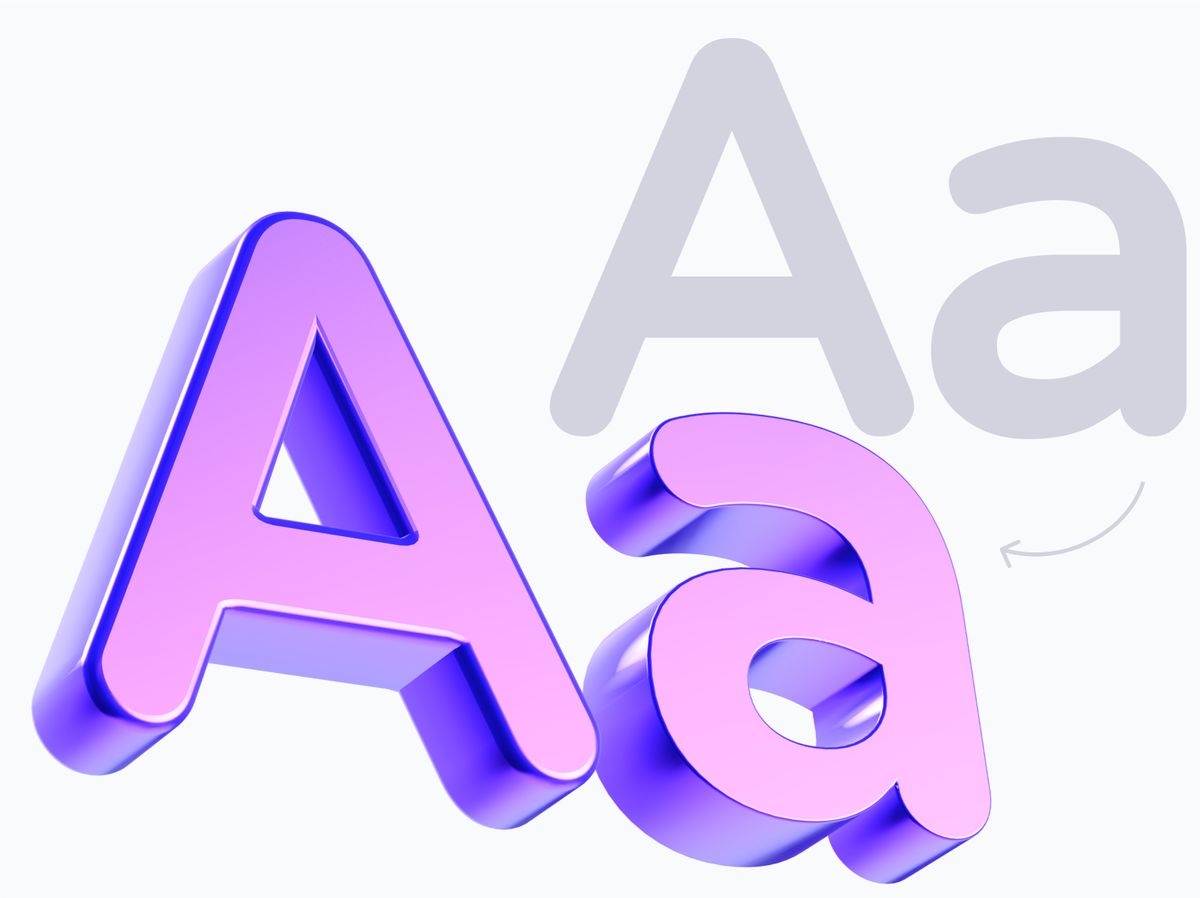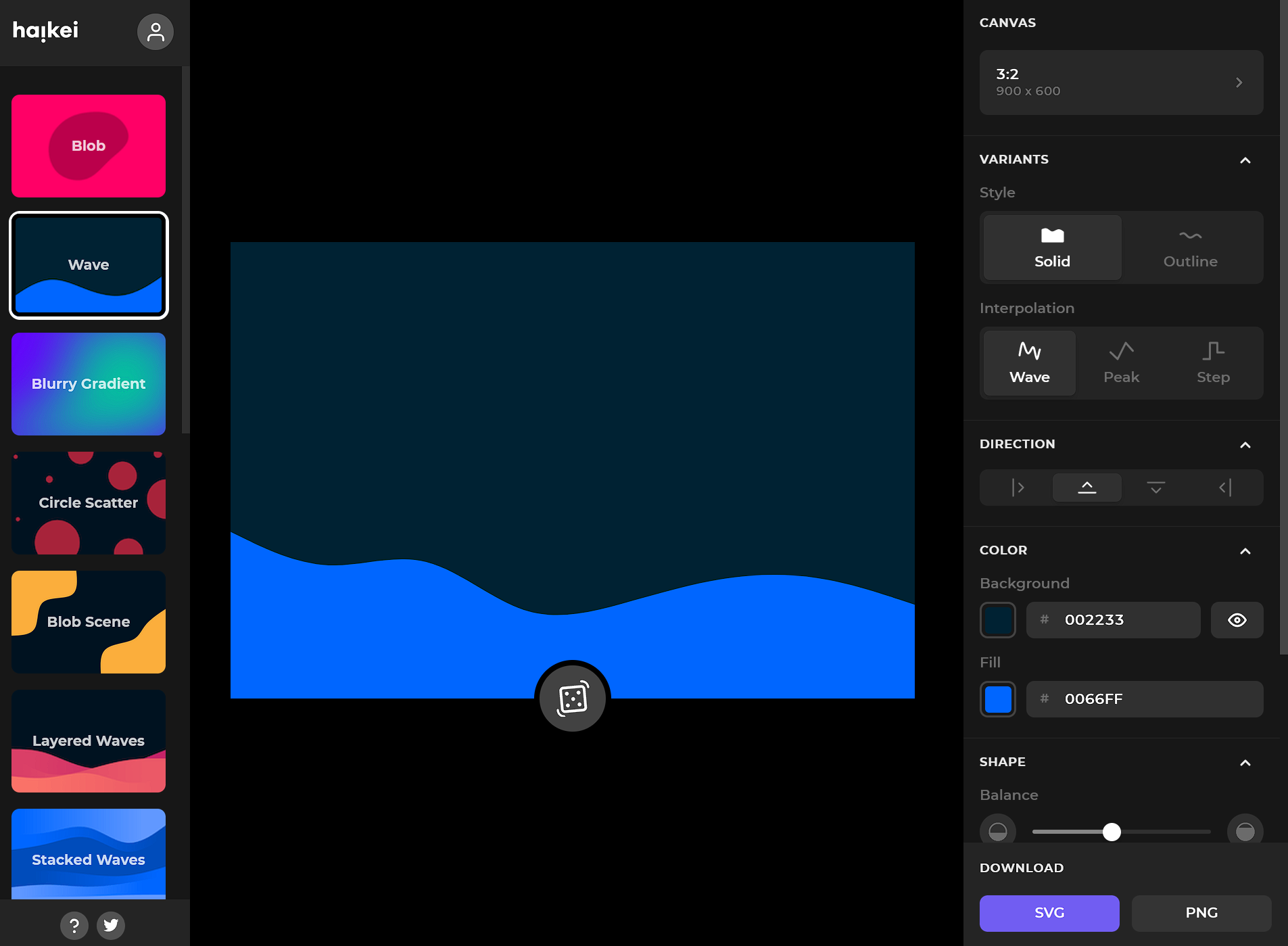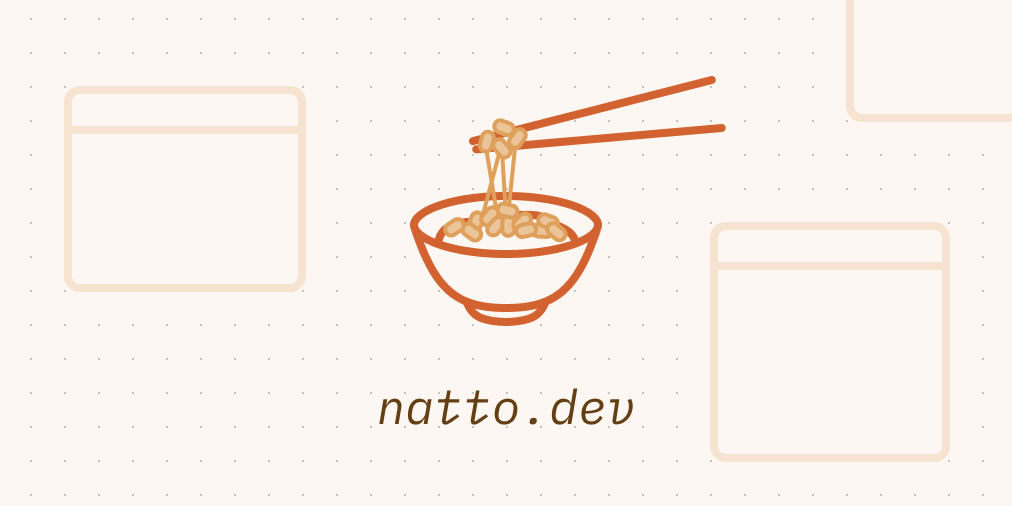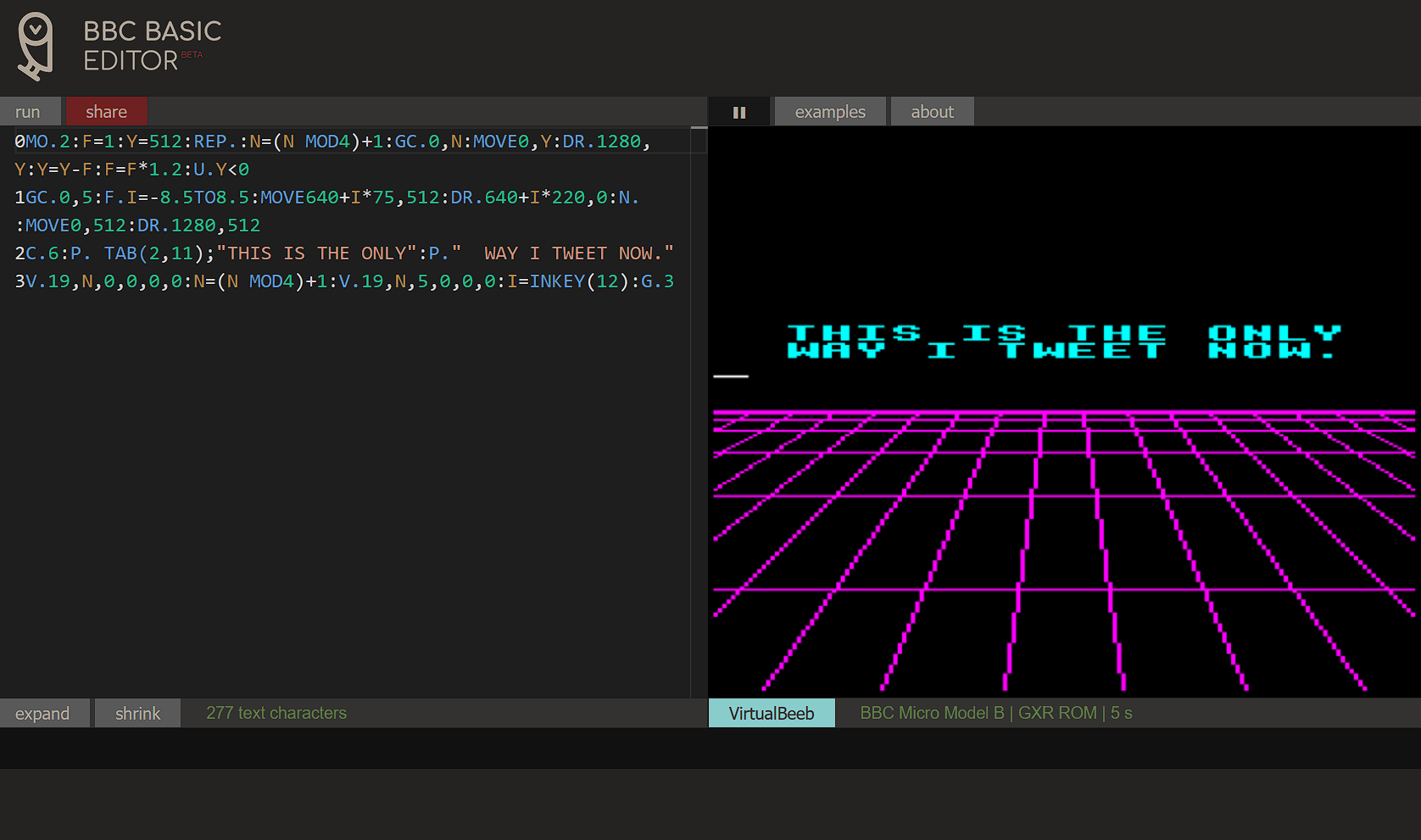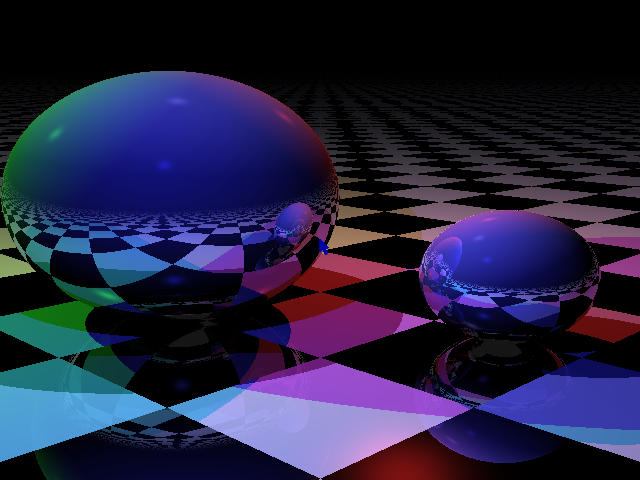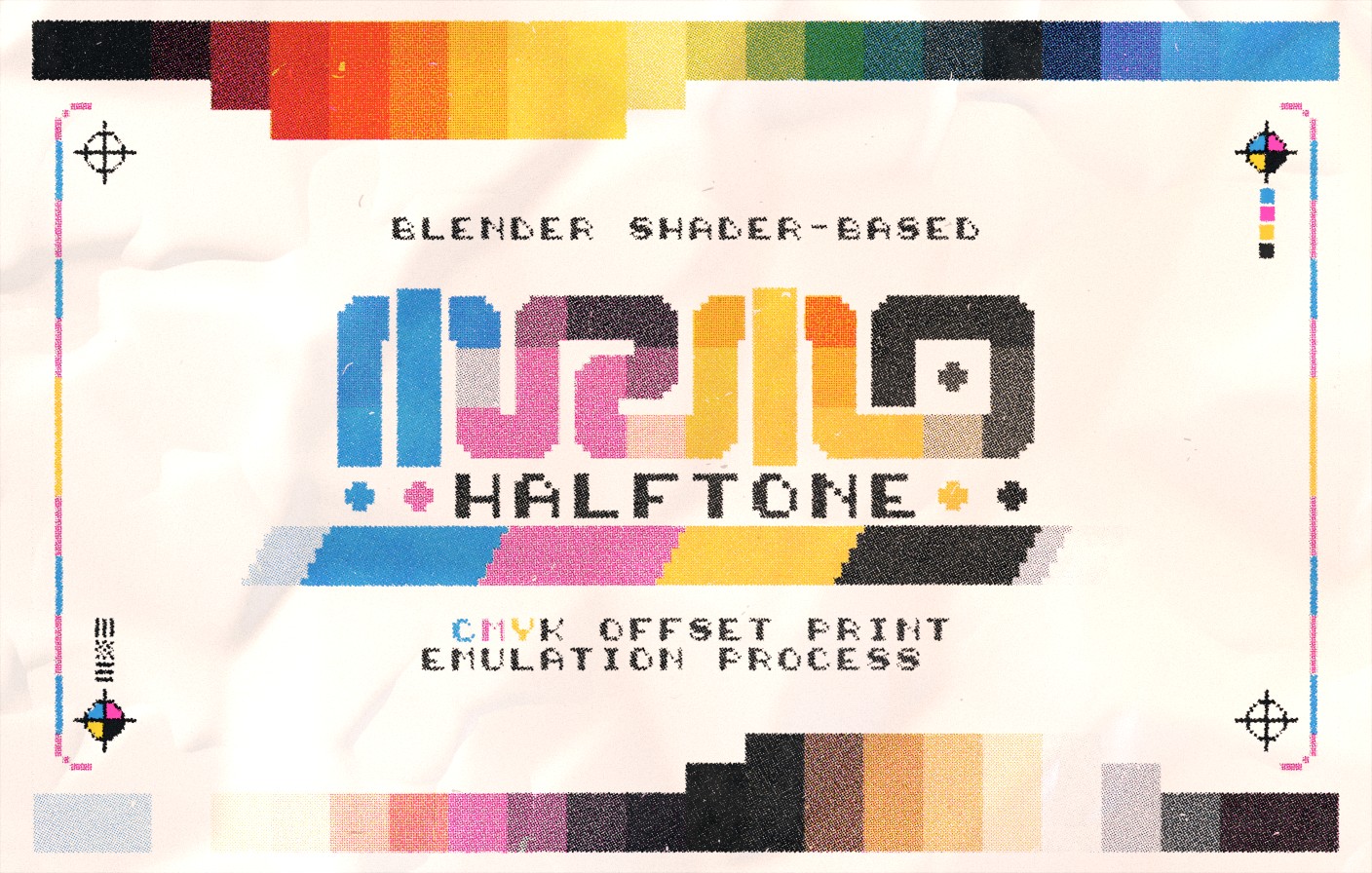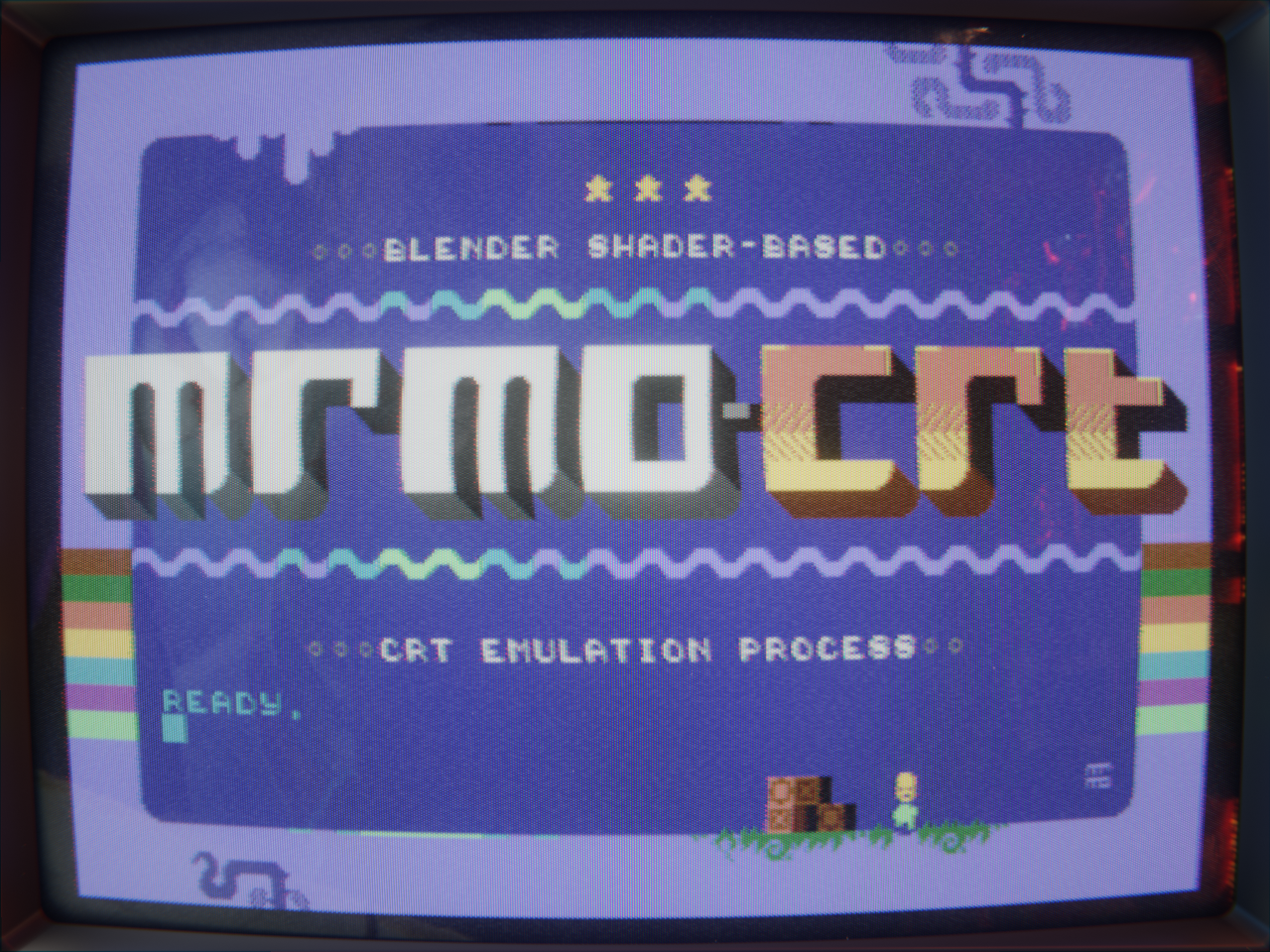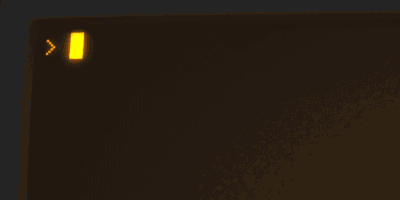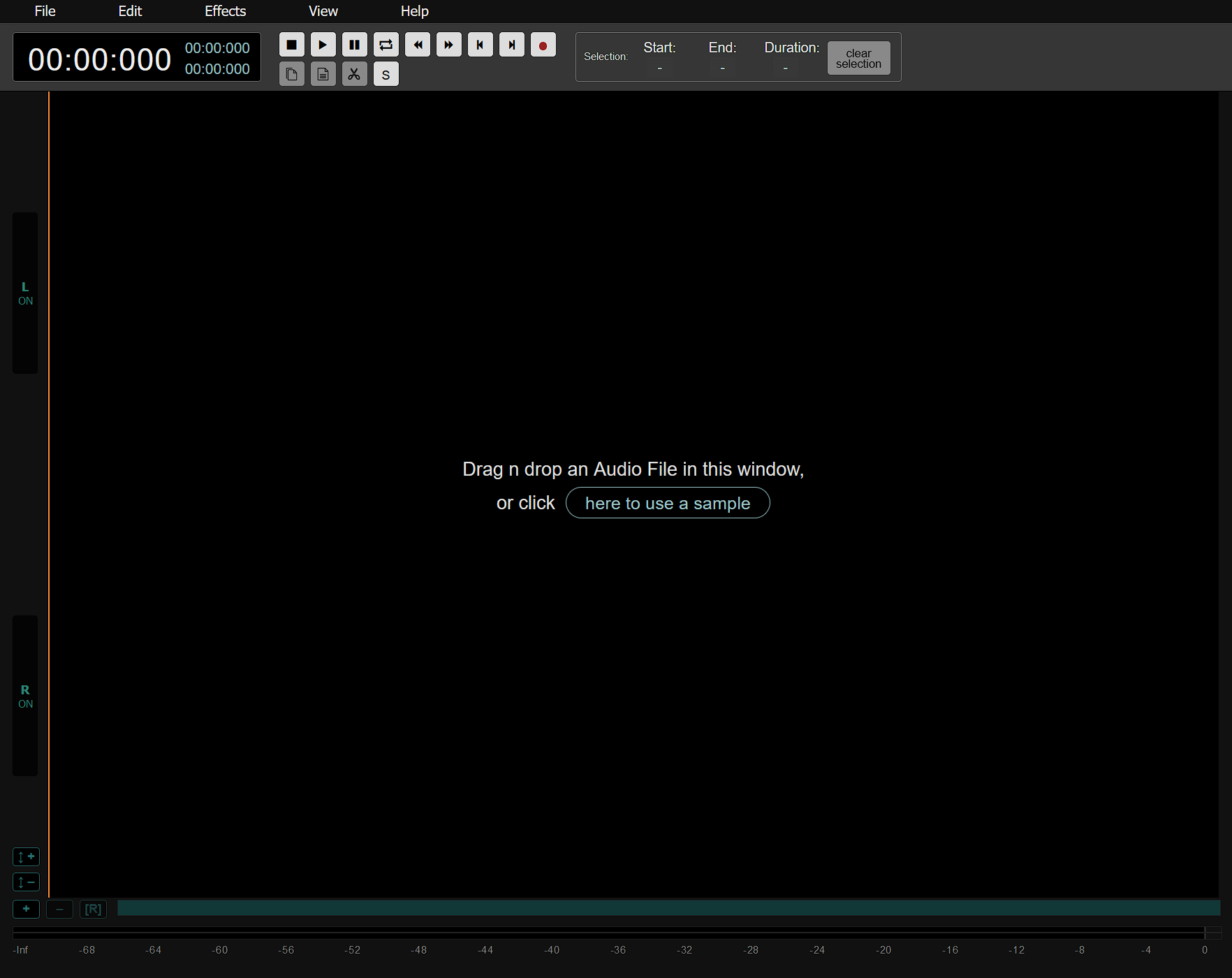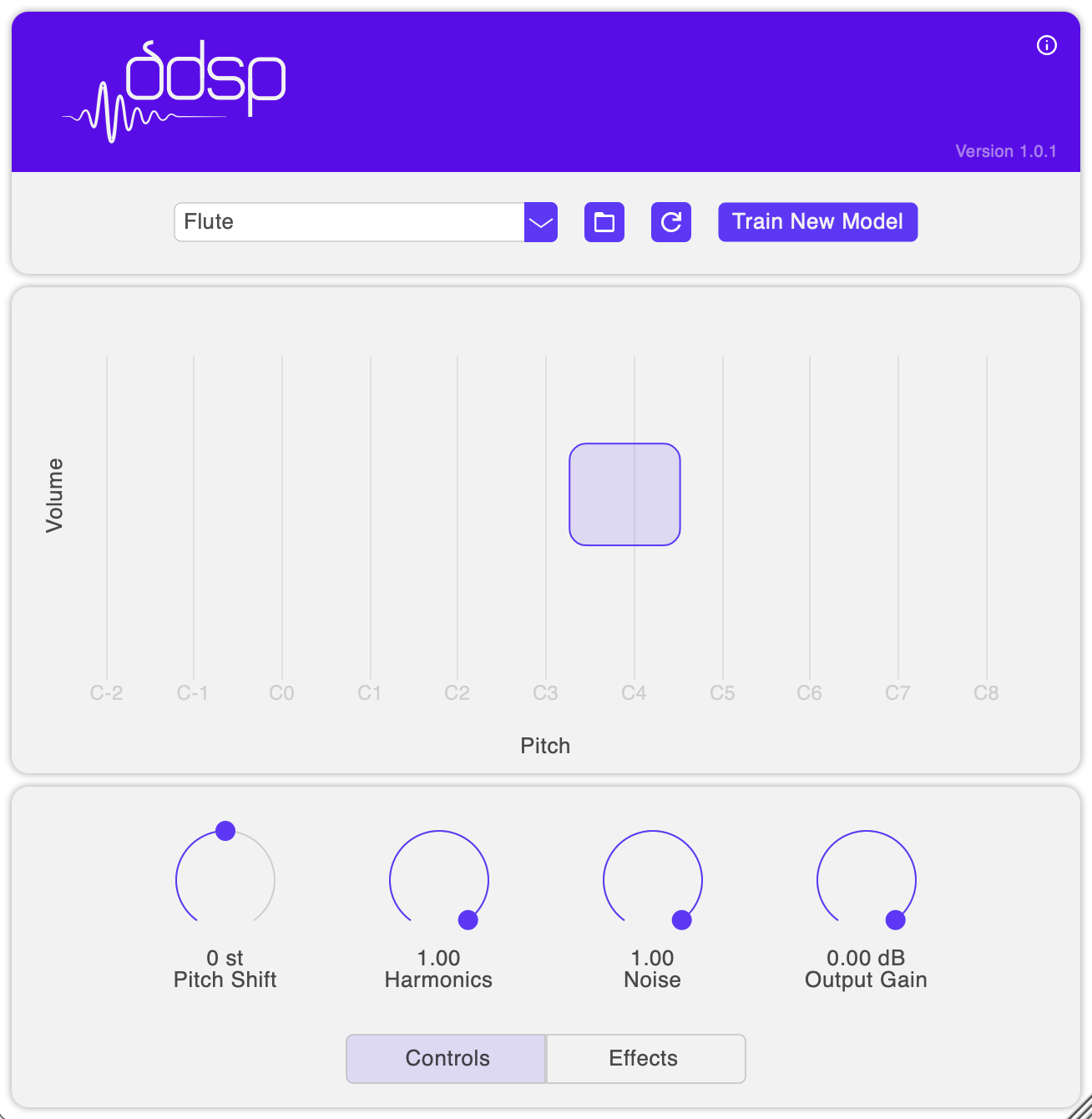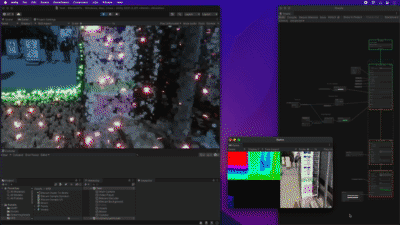A lot of exciting tool related developments have been happening in the indie game space since my last post. Go get lost checking out all The Tool Jam 2 submissions… also my Cool Tools itch.io collection is at its 400th addition as of today! When I started writing about tools, and putting together that curation, I thought I would stop at maybe 30… or 100 if I felt like doing too much work. I only got into paying attention to all this because of the Electric Zine Maker, and I wanted to highlight other exciting work done in this space. I had no idea what I was in for! Every time I publish one of these tool posts I think “OK, that’s enough. I have written enough about this.” and then there’s more. This space never ceases to surprise me.
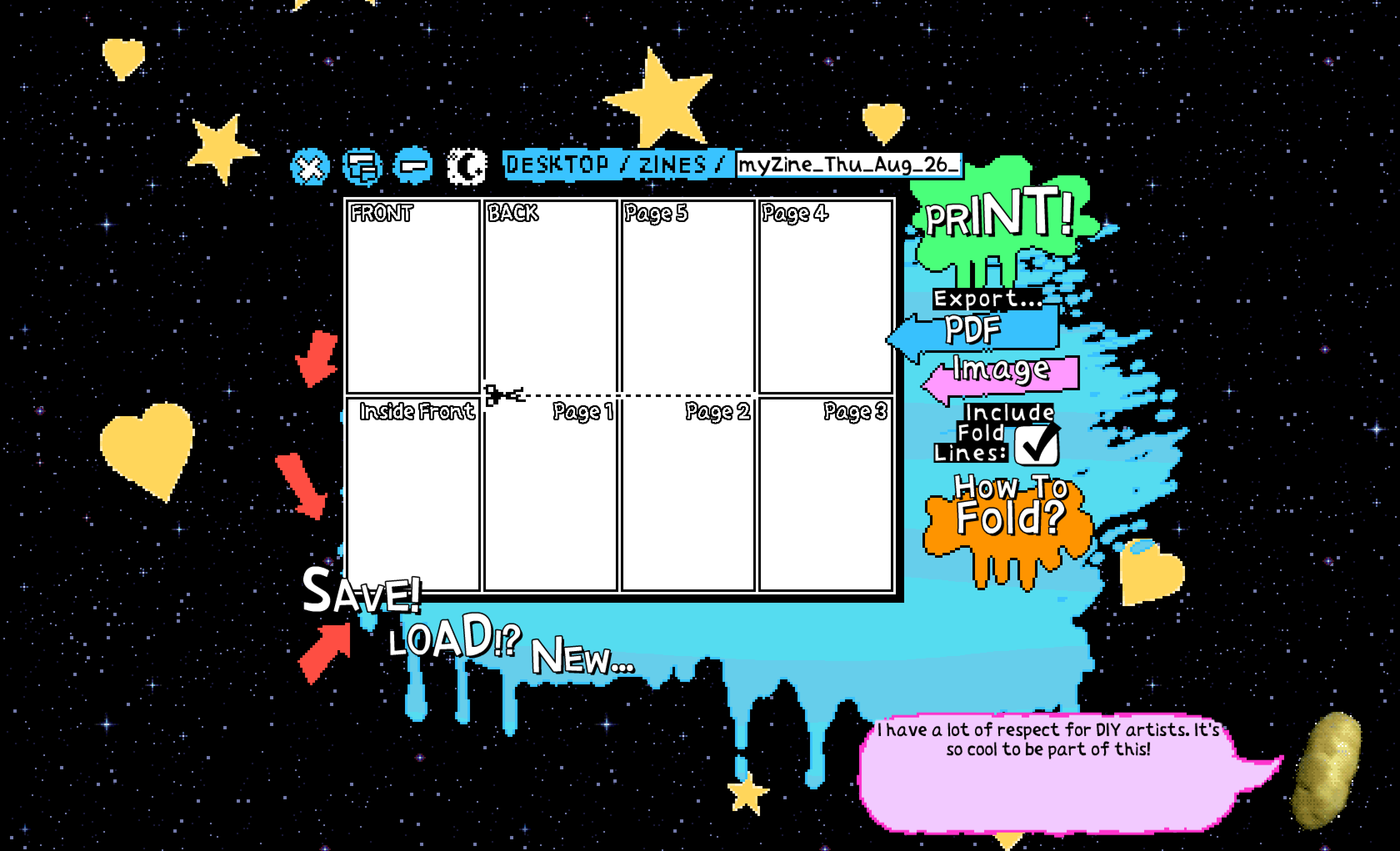
–Obligatory Electric Zine Maker plug…
I’ve been holding off on making another tool post until Mini Maker: Make a Thing was released… all the while patiently hoarding tool links. This post is a big one! Mini Maker: Make a Thing was released just the other day! So here we go…
?? ? Mini Maker: Make a Thing is OUT NOW!! ???
?? Create like a kid again
?? Earn new tools & toys
?? EMBRACE THE CHAOS!Get it now go go go: https://t.co/RnT06lcr1d pic.twitter.com/FgnqRA4lDx
— ? Mini Maker: Make A Thing ? is OUT! GO PLAY! (@minimakergame) June 28, 2022
MiniMaker released yesterday and I wanna write about a couple of the tracks, get ready! ?(1/?)
— Neha MiniMaker OST Out Now! ?? (@Nehapolitan) June 29, 2022
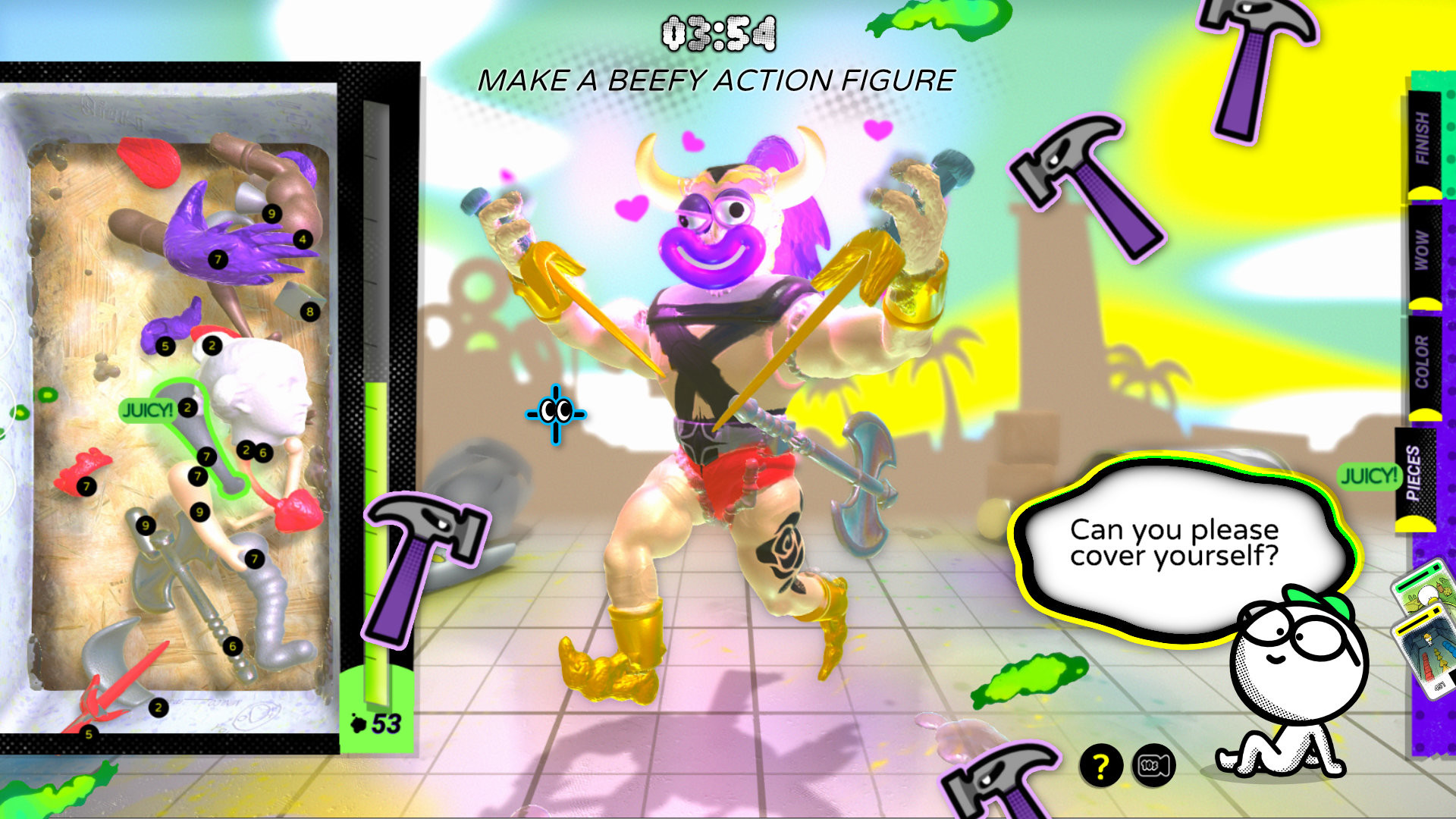
Mini Maker: Make a Thing is a beautiful achievement because it so well illustrates the intersection between toys, tools, games, and occupies that entire space wonderfully.
It reminds me of how old-school creative software used to be this goofy and playful possibility space. For example… see Microsoft 3D Movie Maker, which was open sourced a while back and is already enjoying a community of people porting it to modern platforms, or older edutainment creation based games like Elroy’s Costume Closet… I should stop myself from listing examples. There’s so much out there. Creative software has existed as long as computers have been around.
It’s wonderful to see such design philosophies kept alive in today’s indie game space.
Mini Maker: Make a Thing is so much of that. I personally find it to be a fascinating example because it’s reminiscent of these older creative concepts, but with much of modern indie game conversations mixed into it. It’s a unique experience that will certainly make you laugh. I love that it doesn’t take itself seriously at all.
The driving concept behind Mini Maker: Make a Thing is that you assemble bits and pieces to make things.
In terms of creative scope or polish, it’s like a very tuned down version of Little Big Planet’s community levels… where Little Big Planet traditionally gives its players access to all the assets from the game and lets them make and share their own levels… Or (a type of tuned down) Dreams by Media Molecule. These example being important both for the ethics discussion that is about to follow, and how much our current view or approach to the “relationship to creativity” has changed in the mainstream…
The philosophy of “let people make things in our game” has always existed in some form or another, in varying scope, but I feel like Mini Maker: Make a Thing takes things back to the roots of creating on computers. It exists just for the joy of making weird things.
I love it because what you make in it is so strangely arbitrary. It does not serve a purpose. You don’t make things in it to enhance the intellectual property “value” of whatever platform you are on… Dreams, for example, as thriving as its creative community is, keeps whatever is created in it exclusive to Dreams. Anything made in it is locked behind its walls. Dream’s creators are stuck there, unable to share outside of Dreams their games that are often new and sophisticated creations in themselves. All this makes these creative “platforms” feel exploitative. Like the player base exists to enhance the monetization value of the platform, while benefiting very little from it.
So… It is lovely to see something like Mini Maker: Make a Thing that has a smaller scale yet comparable level of polish to Dreams, or the goofiness of Little Big Planet’s community mods… but it keeps things respectfully arbitrary (for lack of a better term). It doesn’t have that sinister undertone like it’s monetizing what you make in it. It doesn’t feel like you are effectively providing it value by making things while getting nothing for all that hard work poured into it… It’s charming, creatively empowering, while not taking itself too serious.
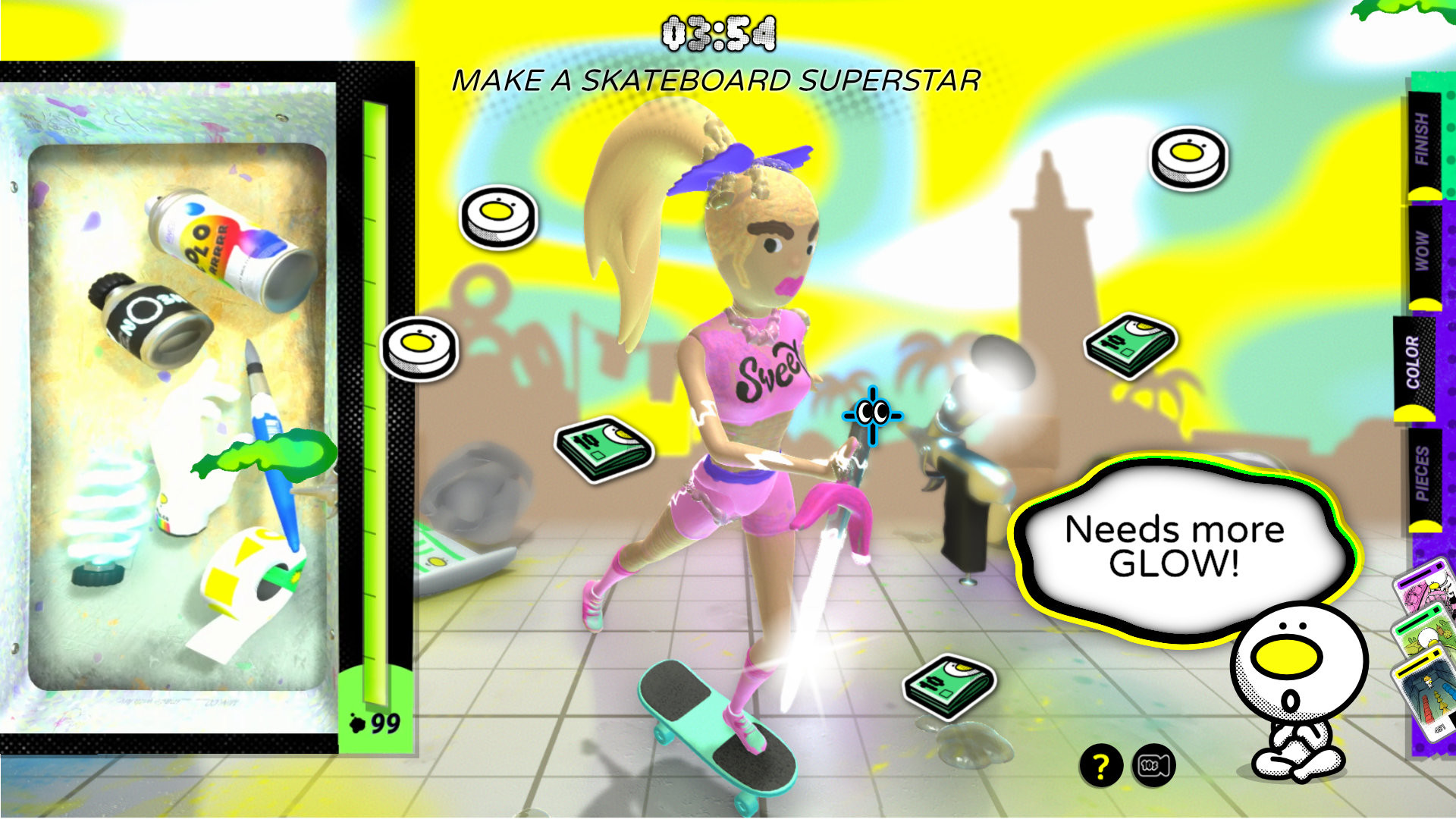
In the past, when engaging with these larger creativity based games, I often caught myself wondering: does me, being part of collective participation, and making things in (for example) Minecraft enhance Minecraft’s value, and therefore Minecraft is able to monetizes how I exist in it? Am I not making free content for it? How are these things designed to be just fun creativity, and when does it turn into exploitation?
Modding has always existed, for example DOOM still benefits from a thriving community building things for it today, but where’s the line between letting players exist creatively and milking them for all they are worth?
Some incredible work is done in Dreams. Players making what basically amounts to entire new games, but they don’t exactly make a living from it. Their work is “trapped” on that platform, with nothing really sharable or distribute-able outside of Dreams. This makes preservation impossible. It also has a cult quality to it where creators don’t exist as independent artists outside of those walls. Their work stays there. Keeping them there, otherwise they lose the following or work they made there.
As an even more extreme example, platforms like Roblox have come under similar scrutiny as being exploitative because creators get very little, if nothing, for all the work invested in it.
Investigation: How Roblox Is Exploiting Young Game Developers, The trouble with Roblox, the video game empire built on child labour, Is Roblox Safe For Kids? The Digital Realm Faces Child Exploitation Accusations, Roblox business model criticized as exploiting children… These are just top examples from a quick Google search. There is a lot of criticism toward Roblox…
An even more extreme example is the way people’s eagerness to “make a game”, while being part of something exciting… or their eagerness to “break into games”, are constantly tendencies that lead to people being exploited in the game industry. For example see the more recent “The Day Before: Developer of Steam’s Most Wishlisted Game Defends Using Unpaid Volunteers“.
A while back there was an initiative from HitRecord that basically amounted to creating “free spec work” by crowdsourcing work from their community to get it included into an Ubisoft game… I have heard so many horror stories from artists burned by HitRecord… It’s a fascinating example to really dig into because HitRecord’s celebrity founder originally called it a “crowdsourcing platform” when pitching it to a business audience, but to artists it was sold as a space for “creative collaboration”… art published to the site is liberally monetized and used in Hitrecord’s various shows or productions, with the artists making next to nothing when their work is used. It is also interesting to note that once someone’s work is used in a production the site doesn’t allow artists to delete their work. It’s such an example of promising people fame, popularity, or inclusion, while taking advantage of them.
I mention these examples because exploiting artists is a very real thing, and companies are always finding new ways of doing so under harmless sounding creativity-centered pitches. It seems innocuous but it quickly turns into everything but.
All this is often done under the guise of “benefiting artists”. It’s worth pointing out that, when labels like “filmmaker” or “artist” or “musician”, are reduced to the capitalist friendly label of “content creator”, it should be a red flag indicating how monetizing creative people is the business model. The term “content creator” is one I remember from when it was still new. Before it was so normalized that it eventually lost its ominousness, it meant “people that make free content for us” because the company doesn’t need to make that content, the users can… making a steady stream of stuff the company can monetize.
It’s a business model that is absolutely common on the modern web, letting artists (or “personalities”) scramble for table scraps, often promised some level of fame… It’s natural that this would also make its way into how a creative community surrounding a game would be treated. The intention behind how it exists should be questioned.
So, all that said, there is a very valid ethics concern with such games that let players create in them. I do believe they benefit from that and it can easily become exploitative. In its most extreme form this is basically the worst of abusive storefronts, packaged in a playful creation context as a way to justify making things (for free) for the platform.
A community creating things for a game they love is, at heart, good. It has always been around. Older games like DOOM or Quake, that let players mod, still allowed players to distribute their work outside of those games. These had more of an open source aspect to how people shared and created for them.
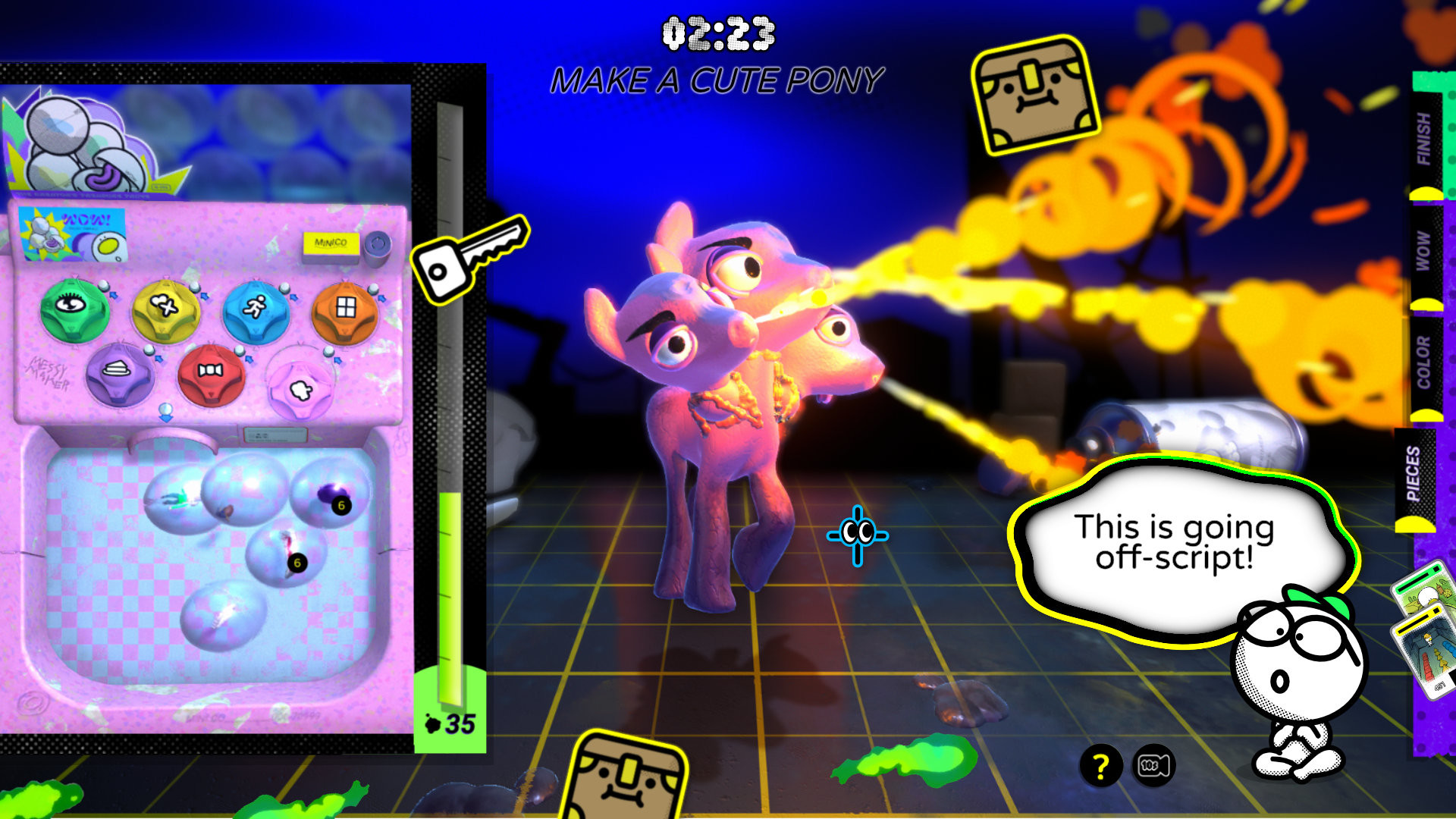
I say all this to put into context that I am encouraged by projects like Mini Maker: Make a Thing, that exercise constraint in how the creative relationship between player and game is handled. I don’t feel like my goofy artistic efforts in it are monetized. I don’t even feel like the stakes are high, or that a community will judge what I create and expect a certain level of quality, or like I even need to share what I am making. I feel like I exist creatively in it because creating things is silly, and fun, and it progresses this silly little story all of it is part of. It’s back to that beautiful relationship a player has when creatively engaging with a fantasy space.
The indie space is rich with such projects that create a silly context as an excuse to “make something creative”. For example, BouncingMusic is a much older example, the context of which is experiencing music in a game-like way. Music is generated based on a player’s interaction. Over the years I’ve seen dozens of takes on “music generation” at game festivals.
Bombing!! is a game that lets you make graffiti art in a retro world. It’s like MS Paint but with wall art.
Chicory: A Colorful Tale is a much more mainstream indie example where you progress by engaging with the world like it’s a coloring book… I could go on and on. Using some creative activity as a way to progress through a story has existed for a long time. I think it’s interesting to unpack these examples to see in which direction they lean into more… Is it designed more like a traditional game where creativity exists specifically for the sake of progressing (gameplay)? Or is it designed more like a toy where creativity is arbitrary and focuses on the player’s relationship with the activity rather than progress? This is the intersection between toys, tools, and games. Each creator has a different take on this.
Mini Maker: Make a Thing is interesting because it leans more in the direction of game, with progress, but it’s not so heavy handed that the creative aspect disappears beneath the urgency of progressing through a story. I think it’s a beautiful achievement.
You should try it. Maybe I make it sound much too serious with all the analysis. It’s a ridiculous, goofy, game-toy-thing.

Since my last post I’ve accumulated a large curation of creative tools that are each inspiring, or exciting, in their own unique way.
I could go on and on about each, but if I did I would probably end up writing a book… That’s too long… To keep things short, here’s a big list of links.
These range from game development tools, beautiful art software, music or sound-fx creation, creative coding, and just plain wacky tools that run in the browser.
~ The Big List of Hot Cool Tools ~
“SHMUP Creator allows you to create and build your own shoot ’em up.
This tool is easy to use and powerful enough for more experienced users.
Thanks to the included assets you can start right away to have fun!”
“PicoShop Pro is an exciting new offering from ElectricGryphon Industries, enabling realistic full 16-color dithered images to be developed directly on the Pico8 microcomputer.”
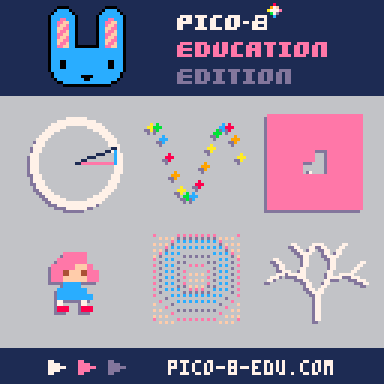
* PICO-8 Education Edition for Web (FREE)
“Say hi to the newest member of the PICO-8 family! A free, web-based, account-less version of the console making it a more accessible way to learn how to program, push pixels and write chip tunes. It comes with a fully functional set of cartridge editing tools, and can load and save .p8 and .p8.png files to and from your local drive (as well as storing them to a temporary filesystem in the browser’s cache).”

* Heavypaint (FREE-ish)
A mesmerizing and experimental paint program.
“A simple yet secretly powerful painting app! Focus on pure colors and shapes with a streamlined interface. Ideal for plein air painting, color notes, sketches and studies.”
“Crocotile 3D is a tool for creating 3d scenes with tiles. Think of it as creating 2d tilemaps with three dimensions.”
“Upload your SVG file and convert it to 3D for free. Customize, animate and export in any format you want.”
“Haikei is a web-based design tool to generate unique SVG design assets for websites, social media, blog posts, desktop and mobile wallpapers, posters, and more!
Our generators let you discover, customize, randomize, and export generative SVG design assets ready to use with your favorite design tools.”
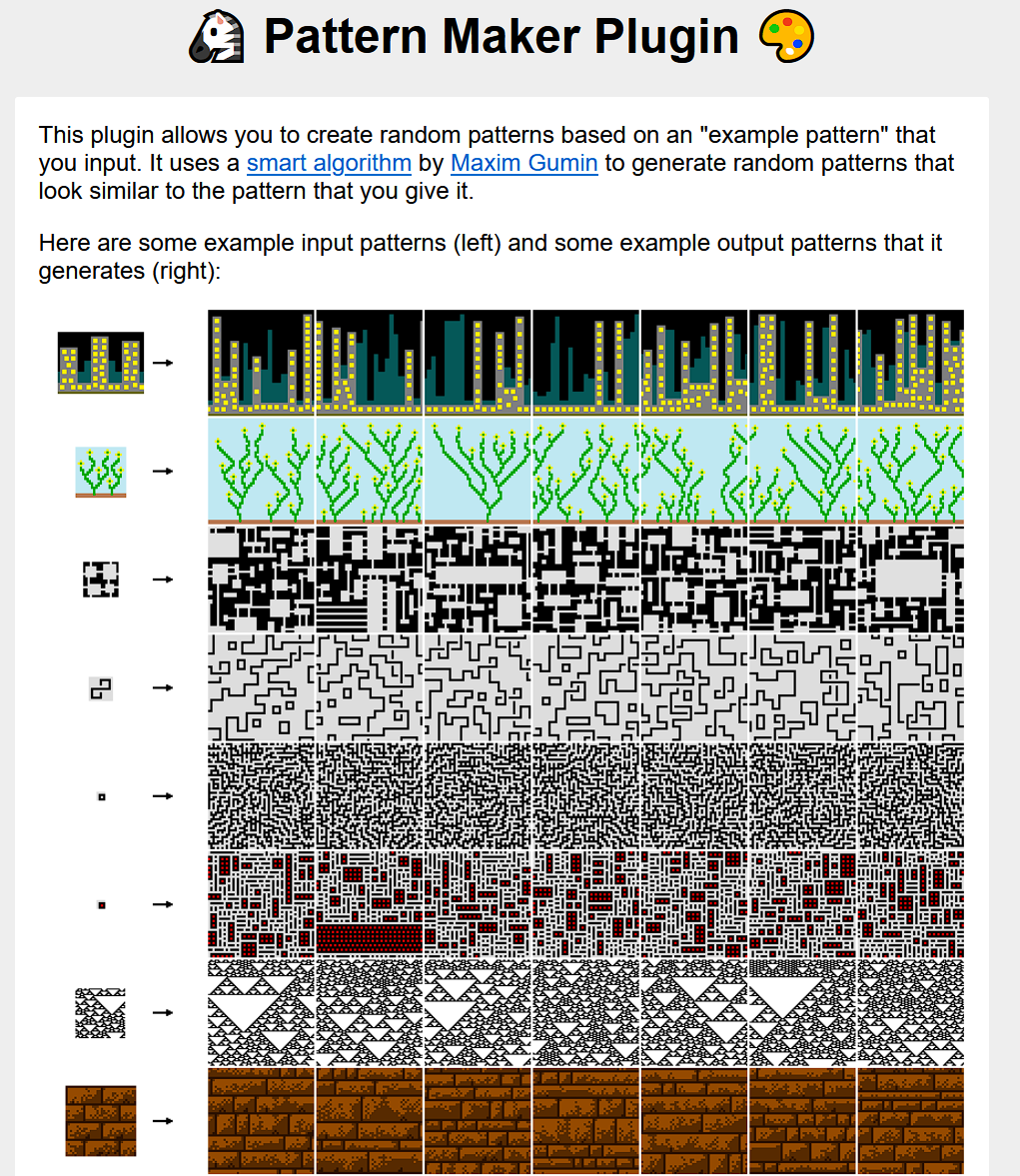
* Pattern Maker Plugin for Perchance (FREE)
“This plugin allows you to create random patterns based on an “example pattern” that you input. It uses a smart algorithm by Maxim Gumin to generate random patterns that look similar to the pattern that you give it.”
Pattern Maker is part of Perchance which is “a platform for creating and sharing random text generators.”
“A spatial environment for javascript. Code runs as you type. Connect panes like spreadsheet cells. Visualize program state.”
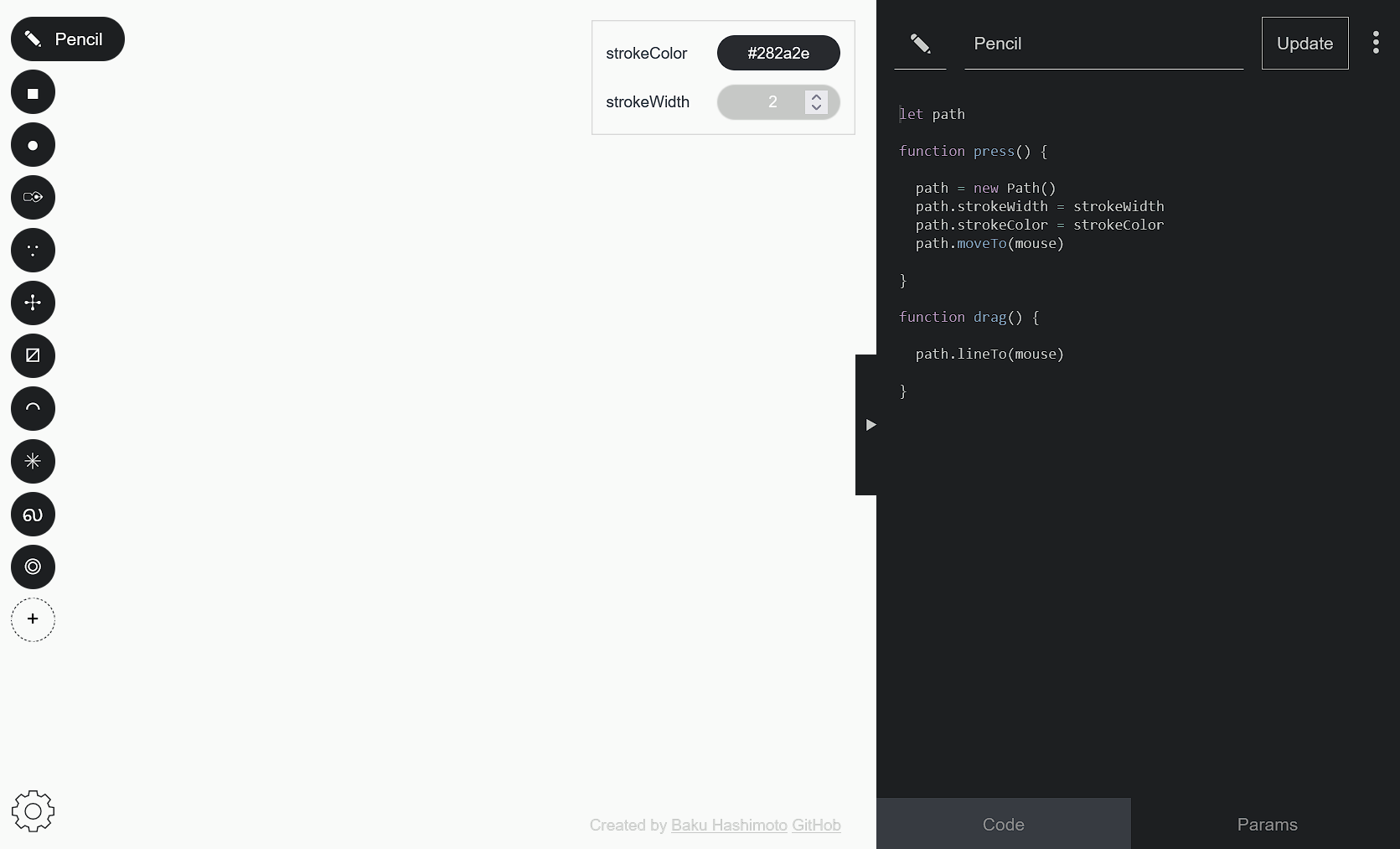
* Programmable Pen Tool (FREE)
“Vector graphics editor with programmable pen tools aiming to be alternative to de facto standards on graphic design tools. This tool is built deeply based on Paper.js. I’d like to take over the phillosophy of [Scriptgrapher].”
“A simple, modern editor for retro coding in BBC BASIC (1981) inspired by BBC Micro bot”
“DOjS is a JavaScript programming environment for systems running MS-DOS, FreeDOS or any DOS based Windows (like 95, 98, ME). It features an integrated editor, graphics & sound output, mouse/keyboard/joystick input and more (see below).”
“Sliderland, a minimalist coding playground by @blinry. Sliderland lets you make animations using 64 sliders only!”
Here's my new minimalist creative coding playground!
?? https://t.co/epXAmyefdR ??
What animations can YOU make using JavaScript and 64 sliders? ??? pic.twitter.com/GnZLV3YDV1
— blinry (@blinry) May 13, 2022
“Doodle with generated patterns.”
“CSS Pattern Generator. Patternify is a simple pattern generator. I built it to save myself the pain of launching Photoshop just to export a 2px by 2px stripe pattern. Not only can you build your pattern online, but with the base64 code, you don’t even need an image file anymore: just include the code in your CSS and you’re ready to go!”
“Use AI to turn simple brushstrokes into realistic landscape images. Create backgrounds quickly, or speed up your concept exploration so you can spend more time visualizing ideas.”
Even if this is very mainstream, I’m including this because everyone has been sharing their DALL·E mini prompts on Twitter… so it seems appropriate to mention this. It’s interesting too.
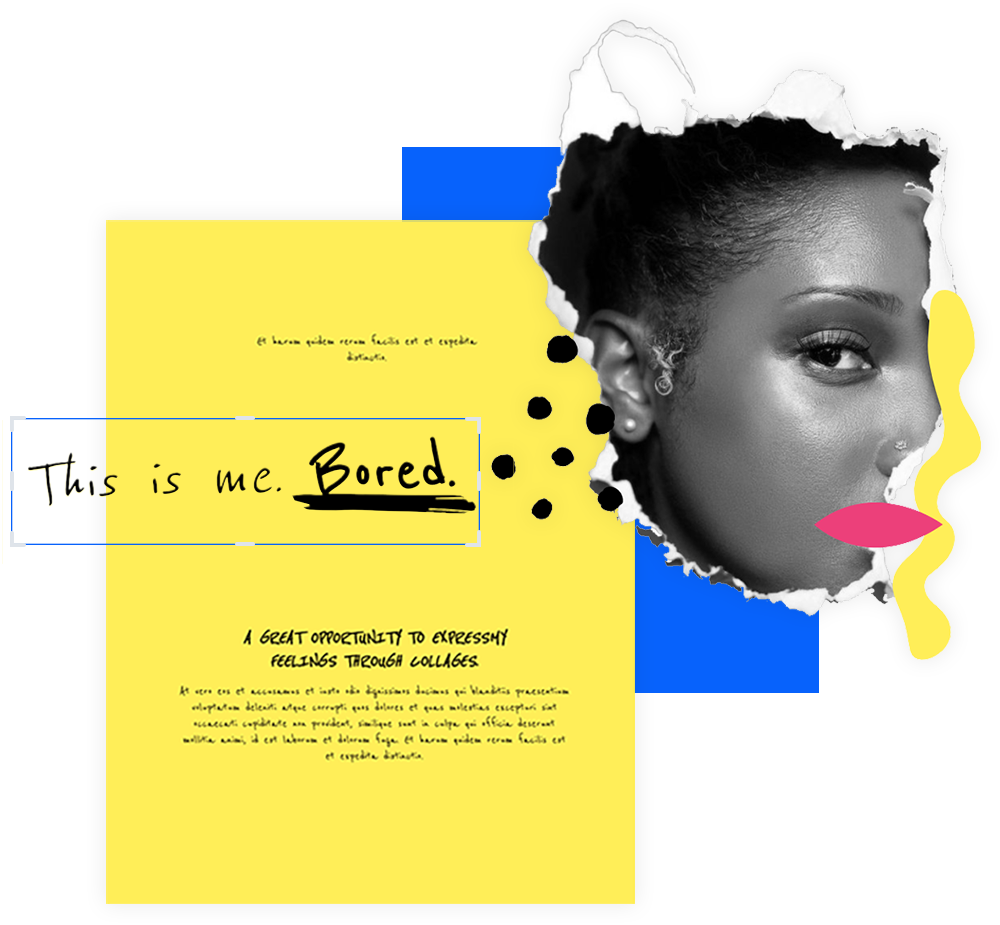
* Free Online Zine Maker (FREE but with sign in)
“Make your ezines online using the simplest design tool you’ve ever used. Quickly drag and drop text boxes, shapes and images on pages. Express your creativity using our online zine maker.”
“Search the oldest results on internet”
“This is an independent DIY search engine that focuses on non-commercial content, and attempts to show you sites you perhaps weren’t aware of in favor of the sort of sites you probably already knew existed.”
“MRMO-Halftone is a Blender shader-based halftone offset printing emulation process that aims to evoke the “feel” of color halftone prints.”
“MRMO-CRT is a Blender shader-based CRT emulation process that aims to evoke the “feel” of CRT displays.”
“cool-retro-term is a terminal emulator which mimics the look and feel of the old cathode tube screens. It has been designed to be eye-candy, customizable, and reasonably lightweight.”
* Unreal 5 Toon Shader (FREE)
A cartoon shader for Unreal 5.

* SEAMS TO SEWING PATTERN (FREE)
“Turn 3D models into sewing patterns for simulation and sewing with this add-on.”
“AudioMass is a free, open source, web-based Audio and Waveform Editor.
It runs entirely in the browser with no backend and no plugins required!”
“Use DDSP-VST to experiment with new sounds and transform your creative process. DDSP morphs audio into a range of different instruments. Unlike MIDI notes, DDSP preserves the nuances of pitch and dynamics for expressive neural synthesis.”
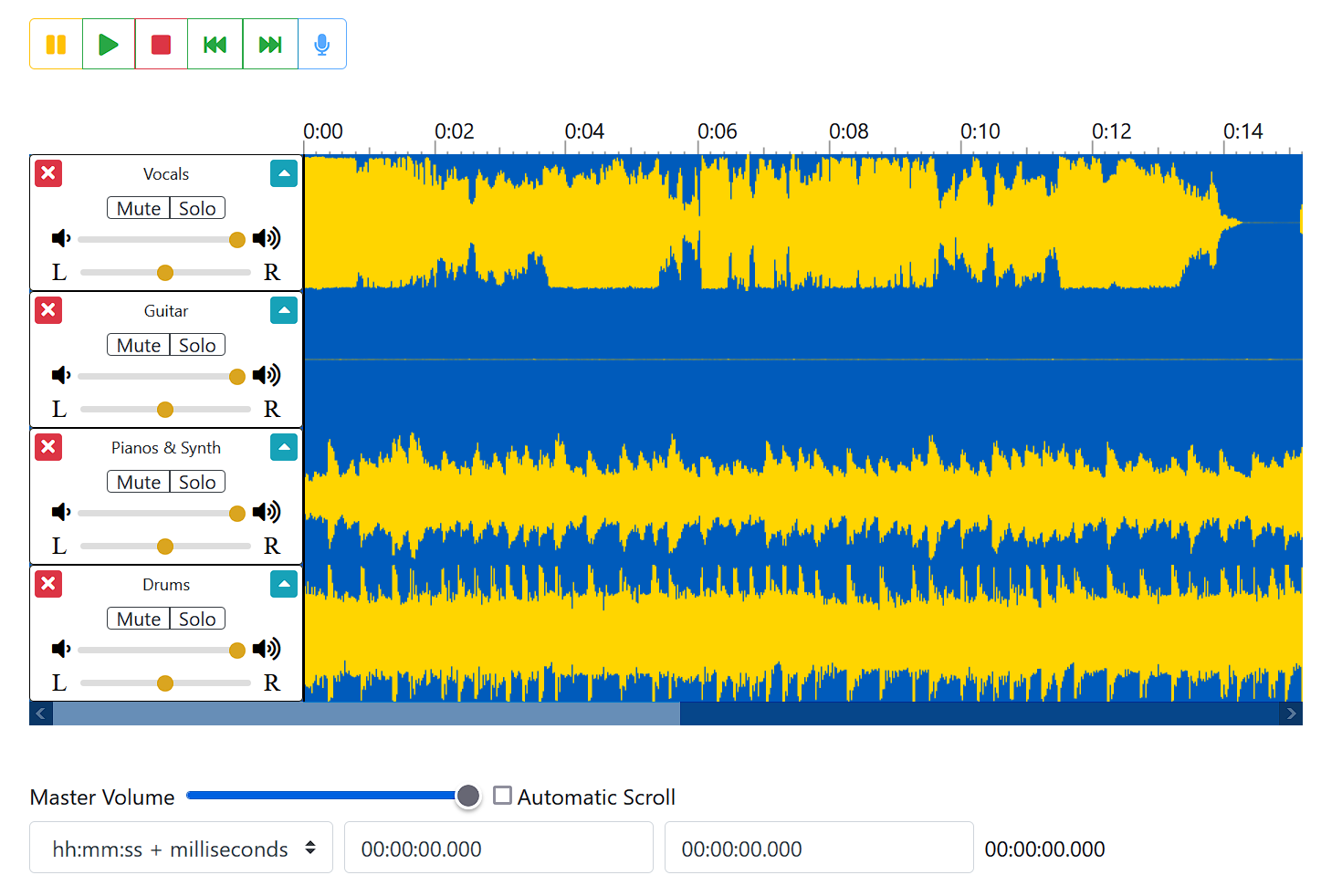
* Multitrack Web Audio Editor and Player (FREE)
This is a collection of web based audio tools.
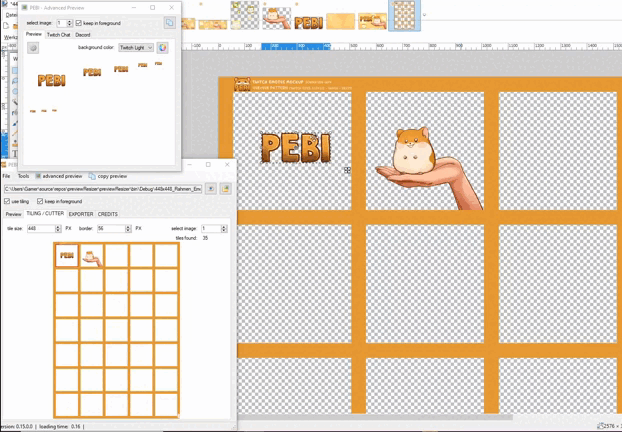
* PEBI – Preview Emotes Badges Icons (PAY)
“The main purpose of PEBI is hot-reloading your drawing(s) while you draw them and show a preview in different sizes for Twitch, Discord or any size you desire.
You select a PNG or JPG file and PEBI will “watch” if the file has been changed. Then you can draw in any program like Adobe Photoshop, Clip Studio Paint, Microsoft Paint or any other program, save to the file you selected with PEBI and it will instantly update all previews.”
“Disclaimer: Don’t take this too seriously, this is a little project for fun, if do you know how to code it’s pretty easy to break the security of this.”
* Animating URLs with Javascript and Emojis
This is very old but I’m including it because it’s fun.
“BibcamVfx is a sample project where I tried using Bibcam to create AR visual effects.”
“OpenSim is a freely available, user extensible software system that lets users develop models of musculoskeletal structures and create dynamic simulations of movement.”
“This Python repository offers a way to perform a markerless kinematic analysis from multiple calibrated views as a unified workflow from an OpenPose input to an OpenSim result.”
“3D Development environment for the web.
WebGLStudio (formerly known as WebGLStudio) is a platform to create interactive 3D scenes directly from the browser.
It allows to edit the scene visually, code your behaviours, edit the shaders, and all directly from within the app.”
